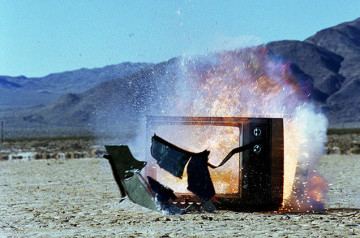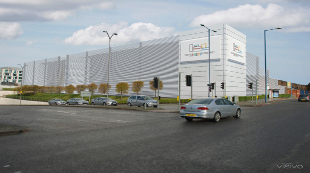 The global 4K TV market is expected to reach $380.9 billion by 2025, according to a new report by Grand View Research.
The global 4K TV market is expected to reach $380.9 billion by 2025, according to a new report by Grand View Research.
The beancounters claimed that the evolving nature of the consumer electronic industry, advancements in graphic engines of televisions, increased pressure on manufacturers to reduce prices, and popularity of the ultra-high definition technology and its advantages have fueled the demand for UHD televisions in the past few years.
Latest graphic processors permit advanced technical image formats and have improved the content quality significantly hence, they are widely used in production and distribution of UHD content. Customers are getting accustomed to using such contents, which is further anticipated to spur the market growth.
The 52-65 inches’ segment dominated the global 4K TV market in 2016 since this segment has a wide range of product offering at different price points. Moreover, the adoption of novel technologies, such as Quantum dot LEDs (QLEDs) and Super UHD (SUHD) and decreasing prices of 4K TVs are expected to catapult the segment demand over the forecast period.
Televisions belonging to this range have high penetration rates as compared to the others. However, the above 62 inches’ screen size segment is expected to witness the highest growth over the forecast period owing to the declining price trend of 4K TVs coupled with increasing disposable incomes of individuals globally.
The global UHD TV market is expected to witness a CAGR exceeding 20 percent from 2017 to 2025 owing to the changing consumer preference from HD to UHD technology along with increasing demand for high-end home products
Moreover, increasing penetration of ultra-high-speed internet, particularly in developed regions including metropolitan cities are expected to favorably impact the 4K TV market growth over the coming years.
The 52 – 65 inches’ segment accounted for the largest share in 2016, which is accredited to increasing penetration of 4K TVs in the higher economic class; however, with decline in TV prices the above 65-inch screen size segment pose high growth opportunities
The Asia Pacific region accounted over 40 percent of the overall revenue share in 2016 and is also expected to dominate over the forecast period owing to the huge adoption along with declining prices of 4K televisions
A few key players who captured a significant market share in 2016 were Samsung, LG Electronics, Sony, Hisense, and Sharp.
 New research commissioned by Sharp claims, SMEs will continue to invest in technology, despite serious concerns over rising costs.
New research commissioned by Sharp claims, SMEs will continue to invest in technology, despite serious concerns over rising costs.













